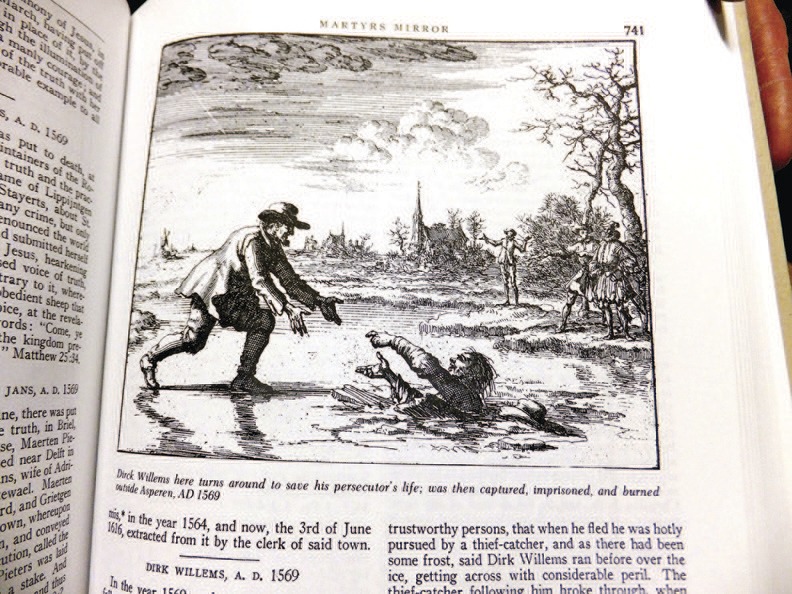The Big Book: Martyr’s Mirror, A look into the Past
Posted by Marcus Yoder on 22nd Jan 2018
Persecution is often viewed as a hindrance to the growth and development of the church. Not one of us desires to be persecuted, but when it does happen, God has faithfully supplied the grace and courage to face those hard times. It is often in times of persecution that the greatest acts of faith are seen.It is also true that when persecution diminishes that Christians often need to work harder to keep, or recover, the original vision of Christianity. This is particularly seen in the Anabaptist Church in Holland from 1650 onward.

This brought concern as the people realized that the stories of the martyrs would be lost as the times changed. One Mennonite leader in Holland, Thielman van Braght, decided to collect those stories. He was convinced that Anabaptism was in danger of disappearing unless the history would be recorded. Van Braght began to gather and compile these martyr stories into one volume, and it eventually became known as the Martyr’s Mirror.
The Martyr’s Mirror was first published in the Dutch language in 1660. By 1685, the second edition included 104 etchings that created a picture of the suffering for the readers, which mark the work to this day. These martyr stories became the central way in which the vibrant faith of the early Anabaptists was communicated.
When the Amish and Mennonite moved to America, the first book they commissioned was the Martyr’s Mirror. They asked The Ephrata Cloister to print a German edition, in this case with no etchings. The Cloister printed it in 1748, and these copies are still in circulation today. If you visit the Amish & Mennonite Heritage Center, you will be able to view each of the editions mentioned above. They are on display not only because they are important and valuable, but also because they remind us of the vibrant faith and the price that our forefathers paid for that faith. They also remind us of the need to constantly evaluate our lives to see if our faith could withstand the same tests as our forefathers withstood.
Today
the Martyr’s Mirror can be found in many Amish and Mennonite homes. Also
available are some modern versions of the stories found in the work. While a translated work from the original is
good, to be able to tell the story in our language so that our children and
youth can understand is of vital importance to convey the historical faith and
heritage of our forefathers.

